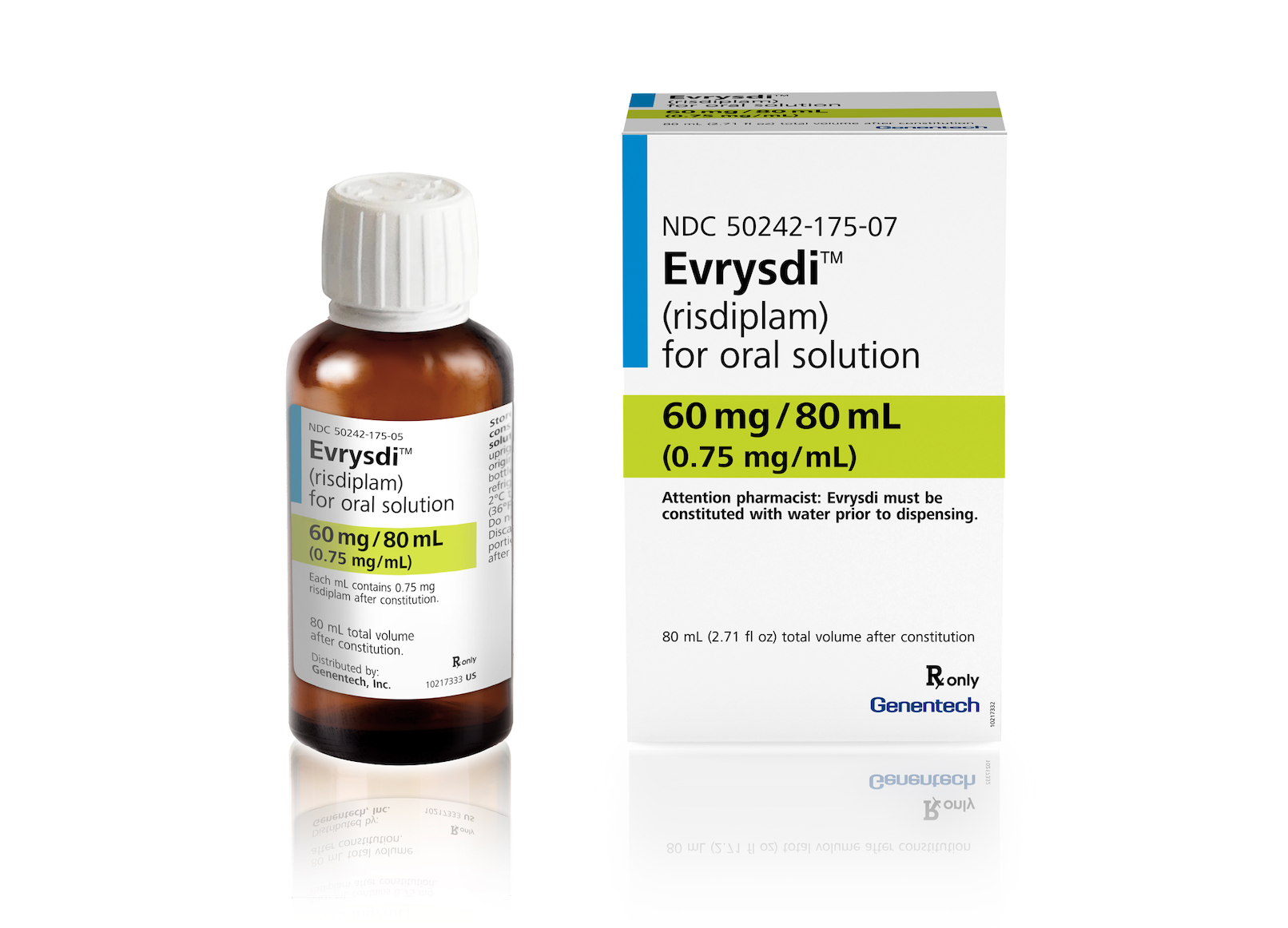‘Rare’ Reinforcement: Evrysdi
Latest disease-modifying market entrant for SMA addresses administration, access gaps.

In August 2020, Genentech’s Evrysdi became the third treatment to enter the market for spinal muscular atrophy (SMA). August is also SMA Awareness month, bringing global focus to this autosomal recessive genetic disease. It is one of the more “common” of rare diseases, affecting as many as 10,000 to 25,000 children and adults in the US, with one in 6,000 to 10,000 born with the disease. SMA is caused by degeneration of motor neurons in the anterior horn of the spinal cord that results in progressive motor weakness. There are five clinical types of SMA (0, 1, 2, 3, and 4), which are classified based on the types of muscles and genes affected, range in age of onset, severity of muscle weakness, and patterns of clinical features. Some types of SMA lead to death in early infancy, while others appear as mild muscle weakness in adulthood.
All three approved therapies for SMA are considered SMN-enhancing, which means they increase the amount of survival motor neuron (SMN) protein in the body. Individuals with SMA don’t produce the SMN protein at high enough levels, which leads the motor neuron cells to shrink and eventually die.
Of the three therapies, Biogen’s Spinraza was approved in December 2016, for all ages and SMA types. It is administered through intrathecal (spinal) injections every three months and makes the SMN protein produced by the SMN2 gene functional. Zolgensma, approved in 2019, was featured in our brand profiles last year, primarily because of its $2.1 million price tag and it being the first gene therapy for SMA. The one-time intravenously delivered adeno-associated virus (AAV) vector-based gene therapy is for the treatment of patients less than 2 years old. Made by Novartis, Zolgensma delivers a copy of the gene encoding the human SMN protein, which enables patients to make their own SMN protein.
Homefield advantage
Against this backdrop, Evrysdi enters with the distinction of being the first oral medication, and the first at-home treatment, taken once daily for adults and children two months and older. Dheeraj Talreja, executive marketing director, Genentech (a member of the Roche Group), noted that the approval of Evrysdi was based on data from a robust clinical trial program designed to represent a broad range of people living with SMA, mirroring the real world of this disease.

“It included data from our FIREFISH and SUNFISH trials. FIREFISH included infants with Type 1 SMA while SUNFISH included people aged 2 to 25 years with Types 2 or 3 SMA,” says Talreja. “Both trials showed Evrysdi improved motor function in patients. These trials included study sites around the world, including North America, Europe, and Asia.”
Talreja told Pharm Exec that launch marketing activities included education to physicians and the SMA community. And the importance of that community cannot be underestimated. Talreja says, “We’ve been awestruck by the passion and strength of the people living with SMA and their families. Throughout the development of Evrysdi, we’ve had the meaningful opportunity to meet with many from the community and learn from their unique experiences. It is a process that has been eye-opening and insightful.”
The Evrysdi team, through collaboration with the SMA Foundation, also sought input from SMA patients, family, and caregivers, as well as healthcare providers on trial design to ensure they reflected the real-world SMA experience.
In addition, Genentech’s community support includes the launch of SMA My Way, which offers stories from people living with SMA, or from their caregivers, as well as practical tools, tips, and events.
Other support includes Genentech’s sponsorship of Cure SMA’s “Walk-n-Roll” events this year. Walk-n-Roll has been held nationwide for more than 20 years, raising funds and generating disease awareness.
Screening and diagnosis
Awareness of SMA includes its 2018 placement on the Recommended Uniform Screening Panel (RUSP) for newborn screening, and 38 states currently screen for SMA. One in 40 to 50 people (or six million Americans) are carriers of the SMA gene. Newborn screening is one way to identify if the newborn has received two copies of this recessive and defective gene. In December 2020, the Health Resources and Services Administration (HRSA), an agency of the HHS, released an update on the SMA RUSP program and noted that one challenge is related to the availability of clinical experts after a positive newborn screen. This may be an area for concern, as the importance for individuals with SMA to begin therapy as soon after diagnosis as possible cannot be understated. In infants with SMA Type 1, 90% of motor neurons have been lost by six months of age. And once these neurons are lost, they cannot be regenerated.
Access gains
Talreja noted that in this first year of US approval, there has been significant uptake for Evrysdi. “As stated during the Roche Q2 sales update on July 22, approximately 1,800 patients in the US had been treated after less than 11 months. Overall, more than 4,000 patients have now been treated with Evrysdi in clinical trials, compassionate use and real-world settings,” he says.
Though it is the third disease-modifying therapy to enter the rare disease SMA marketplace in four years, Talreja says that prior to the approval of Evrysdi, more than half—55%—of people with SMA were not on any disease-modifying therapy, representing a tremendous unmet need. “These people were untreated for various reasons, including complicating health factors, such as scoliosis, contractures, and spinal fusions that may create administration barriers; limited clinical data in adolescents and adults; and other access and administration challenges,” he notes. He added that approximately 32% of new Evrysdi patients had not been previously taking disease-modifying therapy.
Evrysdi has been approved for use in 54 countries and submitted in a further 33 countries. According to Talreja, Genentech expects to continue sharing new findings from its clinical trial program, including additional results from JEWELFISH, in people with Types 1-3 SMA who have been previously treated with another SMA-targeting therapy, and RAINBOWFISH, in babies with pre-symptomatic SMA, which are not included in the current label.
Read the profiles of all 2021 product launch selections here.
Lisa Henderson is Pharm Exec’s Editor-in-Chief. She can be reached at lhenderson@mjhlifesciences.com.

The Misinformation Maze: Navigating Public Health in the Digital Age
March 11th 2025Jennifer Butler, chief commercial officer of Pleio, discusses misinformation's threat to public health, where patients are turning for trustworthy health information, the industry's pivot to peer-to-patient strategies to educate patients, and more.
Navigating Distrust: Pharma in the Age of Social Media
February 18th 2025Ian Baer, Founder and CEO of Sooth, discusses how the growing distrust in social media will impact industry marketing strategies and the relationships between pharmaceutical companies and the patients they aim to serve. He also explains dark social, how to combat misinformation, closing the trust gap, and more.